Trekking to discover sacred Japan
On the Shikoku 88-temple pilgrimage trail
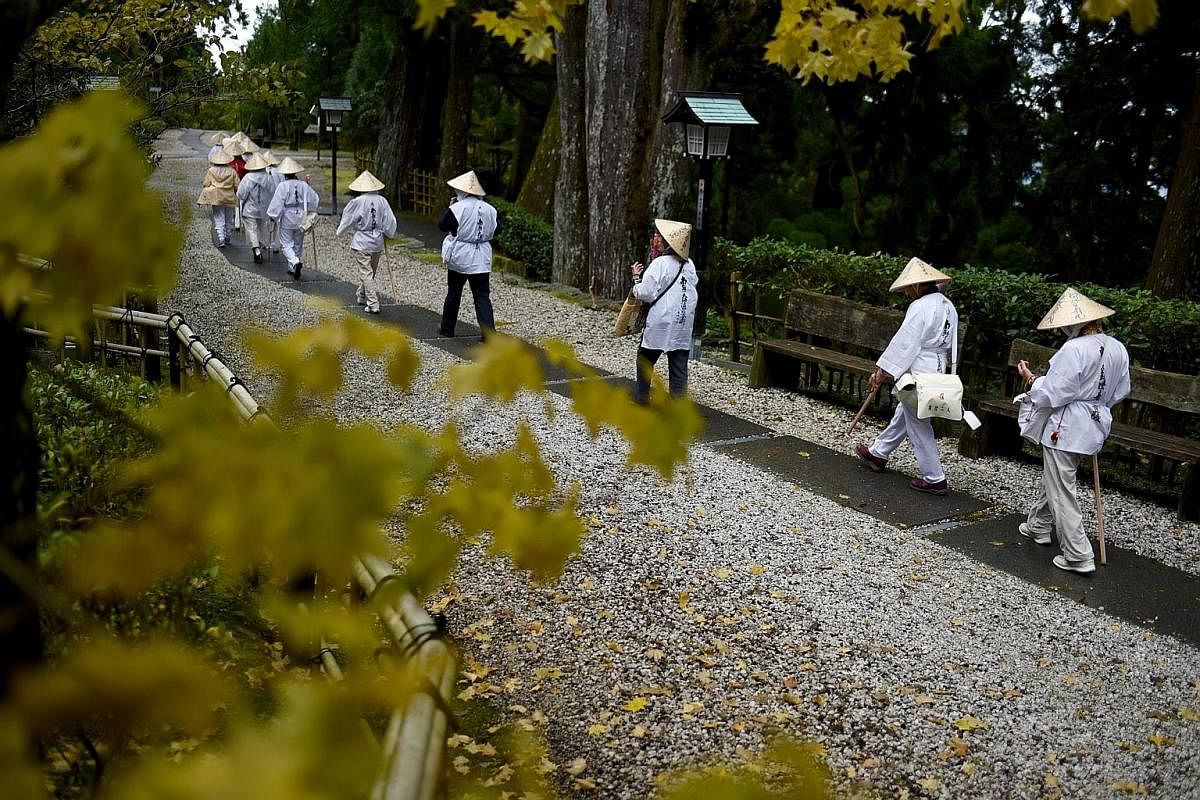
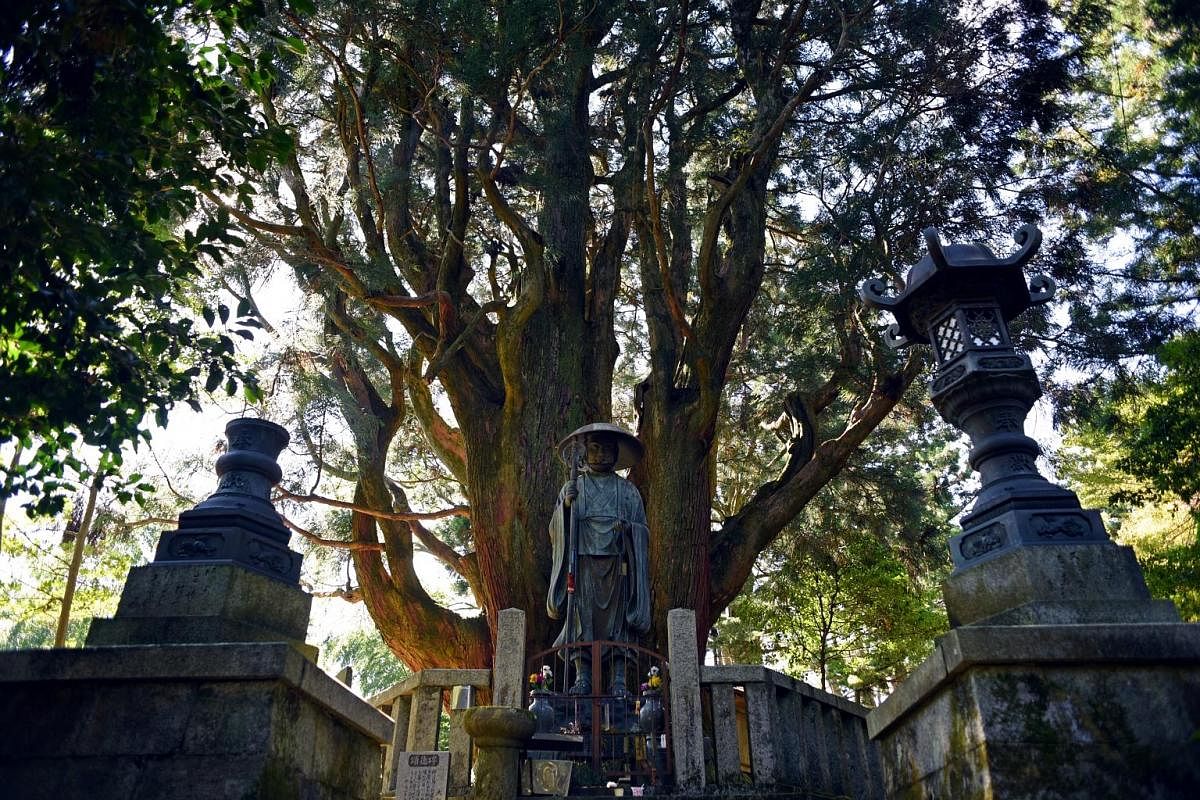
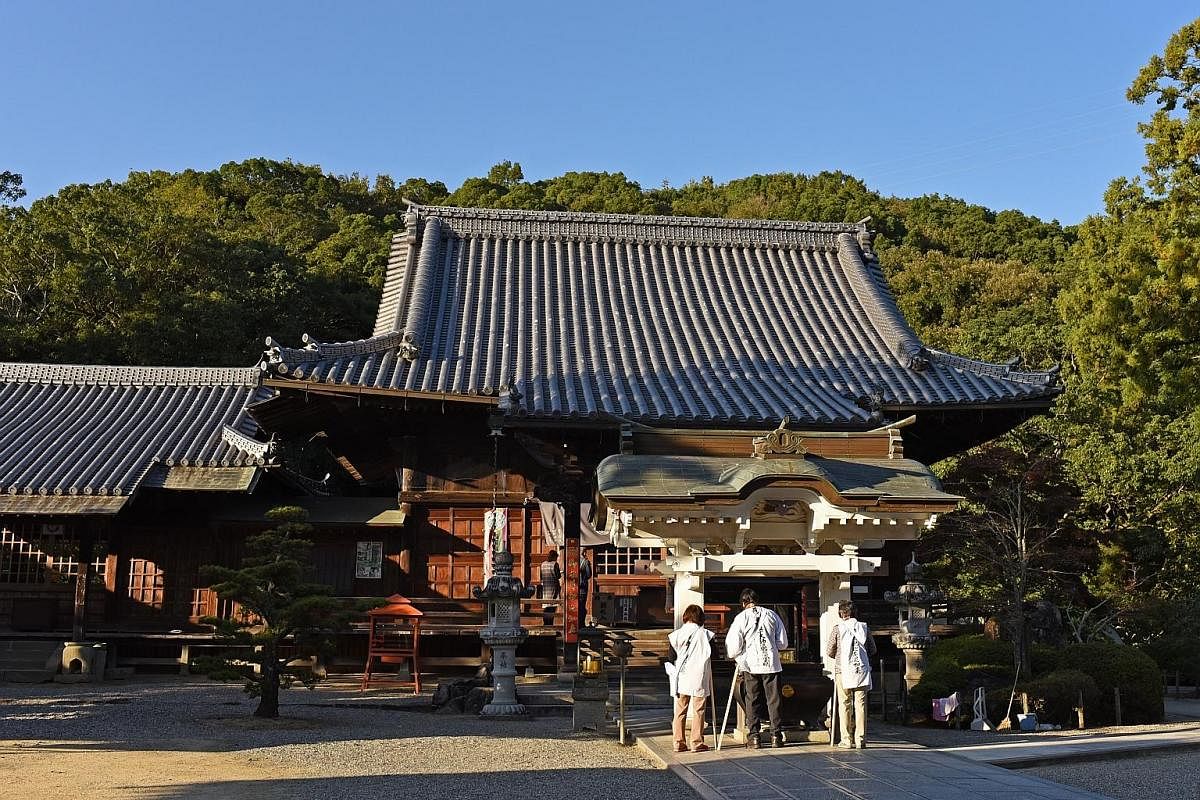
Whipped by the incessant rain, I am drenched and cold when I finally arrive at the hillside Negoro-ji Temple, exhausted.
The hike up the wet and slippery path has been hard as parts of the trail have been flooded by the heavy rain.
Near the entrance to the temple, an old man waves, beckoning me into a hall, which also serves as a kitchen.
Inside, there are a dozen or so men and women in their 70s, all chatting until they turn their attention to me. One by one, they offer me a seat, snacks, hot tea and a dry towel as they attempt to ask me where I am from and find out more about this foreign visitor.
I know I am in good company even though we do not speak a common language.
The misery of being rain-soaked quickly vanishes as I am instantly warmed up in this bubble of hospitality known as o-settai.
This is the act of sharing food or money with pilgrims - an ancient custom that is very much alive today.
The hospitality of the Japanese has been evident throughout my journey on Shikoku island.
I am here on a five-day trek on the famous Shikoku 88-temple pilgrimage trail. Mine is a condensed version as the full journey would encompass 88 Buddhist temples with trails that connect to a network running 1,200km - and would take more than a month to complete.
Pilgrims or trekkers have to negotiate some challenging and steep trails, but will also wander over some easy and flat sections in small towns and villages.

The 88 temples are spread around the perimeter of the entire island, starting in the north-east and heading in a clockwise direction.
The Japanese government agencies in the Shikoku region have recently been working to have the pilgrimage route designated as a Unesco World Cultural Heritage site. It is, after all, Japan's most important pilgrimage route.
Increasingly, too, foreigners are hitting the trails here, hoping to discover Japan at its most sacred and traditional.
Indeed, Shikoku, the smallest of Japan's four main islands, is the epitome of Old Japan. It also has some of the country's most spectacular mountain scenery and off-the-beaten paths.
I am armed with a handful of detailed maps and guides provided by Oku Japan, which specialises in guided, self-guided and custom tours around Japan.
My self-guided trek takes me past forests and rivers, small towns and villages, with stops at many significant temples and shrines.
I also encounter the locals and many henro (pilgrims in Japanese), clad in their distinctive oizuru or traditional white cloaks.
They carry kongo-zue or walking sticks and zuda-bukuro - pilgrims' satchels. These o-henro-san are mostly retirees, although there are young adults too.
Most of them travel in groups around the many temples in coaches, while a few attempt to complete the journey entirely by foot, like the pilgrims of old.
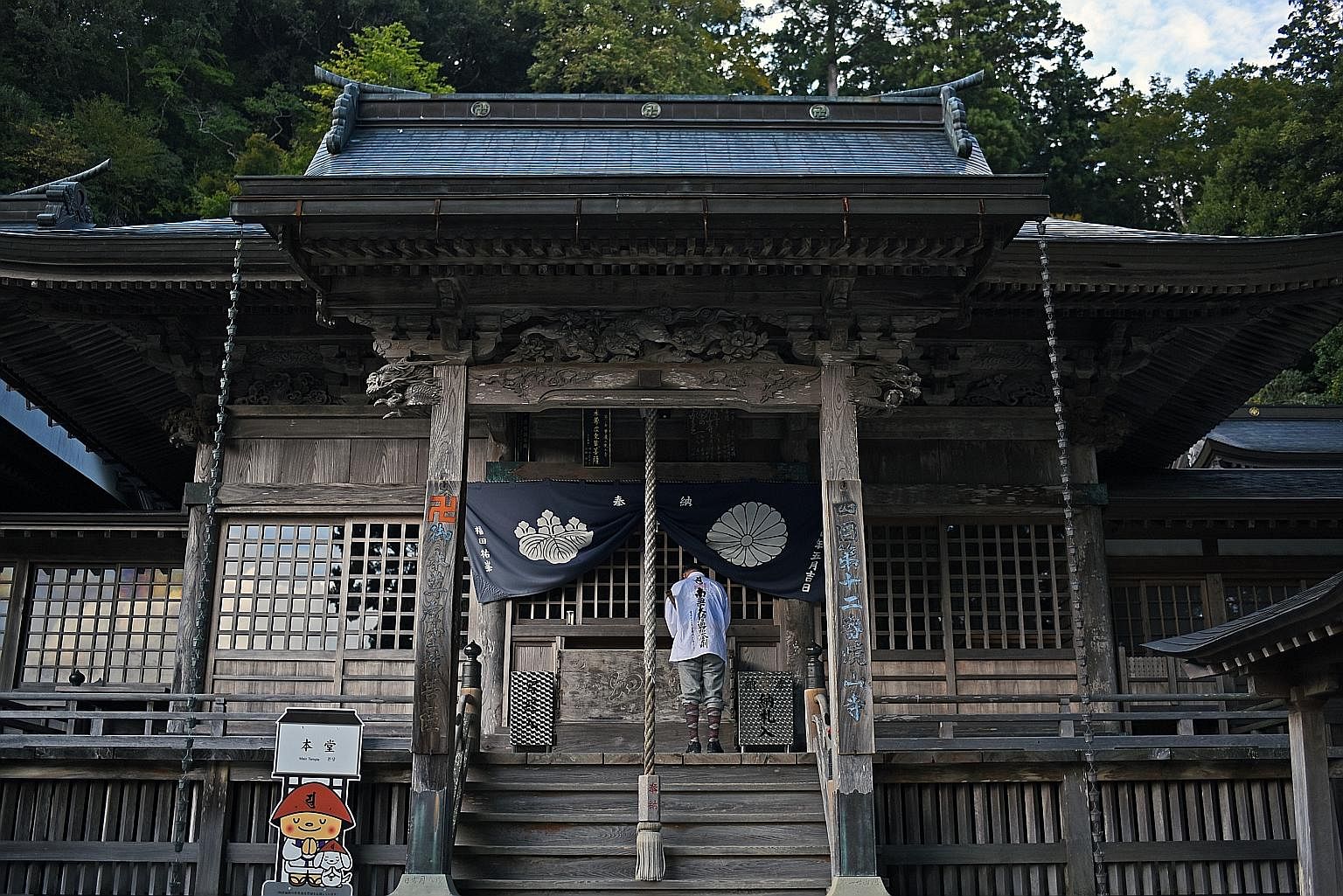
In the past, these walking pilgrims would stay at Shukubo temples which provided lodging.
The Shikoku pilgrimage route (also known as O-Shikoku) is most closely associated with Kobo Daishi (774-835), a Japanese Buddhist monk, poet, scholar, civil servant and artist who founded the Shingon, or True Word school of Buddhism.
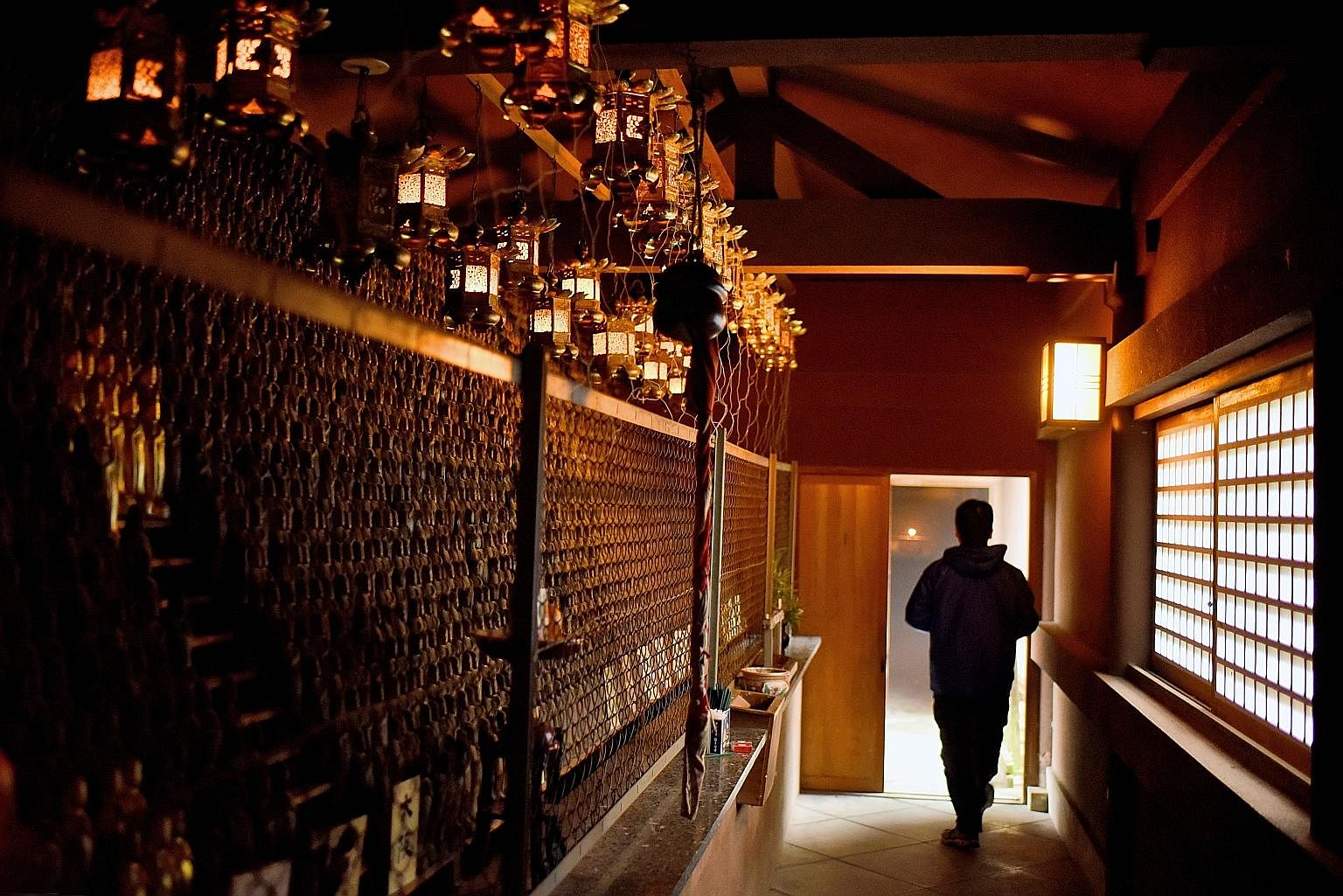
According to Shingon teachings, enlightenment is not a distant reality that can take eons to approach, but is a birthright and a possibility within this lifetime.
He is often credited with founding hundreds of temples on Shikoku island and throughout Japan. It is believed that he also personally pioneered the Shikoku pilgrimage route.
The monk was proven to have travelled to a number of temples, mentioned specifically in his diary entries. He was thought to be born at the site of temple 75 or Zentsu-ji Temple.

The existing circuit of 88 temples was developed and has been maintained by a great many disciples of Kobo Daishi to this day.
One of the many highlights of the trek was spending a night in a beautiful Shukubo temple lodging, attending a prayer session at night and also relishing authentic Shojin-ryori Buddhist vegetarian cuisine.
Shojin-ryori is the traditional dining style of Buddhist monks in Japan and grew popular with the spread of Zen Buddhism in the 13th century.
The meals are made without meat, fish or other animal products and can be enjoyed by vegans, vegetarians and meat-lovers alike.
Although there are some strenuous sections, I am also able to explore the island at a leisurely pace, enjoy the seasonal local cuisine and lock myself into a more contemplative mode inside beautiful temples.
I do not have to wait for retirement to go on a pilgrimage. I already know the places my heart yearns for, even before I set off on my next trek.
GETTING THERE

Osaka, the main gateway to Shikoku island, is served by both Singapore Airlines and Scoot twice a day.
From Osaka, there are frequent trains and express buses throughout the day to Shikoku's main city, Tokushima, where travellers can begin the temple pilgrimage around the island.
Oku Japan operates guided, self-guided and custom tours around Japan. It offers treks of four, five, six, eight and 10 days on the Shikoku 88 Temple Pilgrimage circuit on the island.
For more information, go to www.okujapan.com.
TRAVEL TIPS
•The temples are open year-round and you do not have to trek to visit them. There are convenient alternatives such as cars, bikes or taxis.
• Autumn (late September to November) and spring (March to May) are the best times to visit the area. Summer (June to August) is best avoided as it can be humid and there will be heavy showers.
• Although there are no rules on what to wear during the pilgrimage, you can try to wear a white cloak (oizuru) and a conical hat (suge-kasa), supplemented by a walking stick (kongo-zue), which are readily available at shops near the temples.
• Be prepared for inclement weather. A good raincoat, a hat and a pair of well broken-in walking shoes or boots are essential for a successful trek. Take along a water bottle.
• Try to stay at least one night in a temple lodging, where one can experience meditation sessions and enjoy vegetarian meals.
• The writer was hosted by Oku Japan.
Join ST's Telegram channel and get the latest breaking news delivered to you.
A version of this article appeared in the print edition of The Sunday Times on January 07, 2018, with the headline Trekking to discover sacred Japan. Subscribe
